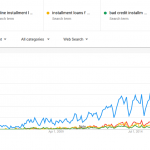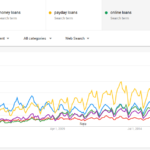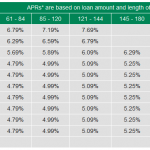A tribal loan operates a bit differently than traditional loans.
For starters, tribal loans are obtained through a tribal lender. This is a wholly owned Native American lender that functions on tribal land under tribal sovereignty.
As such, tribal lenders are exempt from state financing laws, even though they must abide by federal consumer lending laws.
The Native American Financial Services Association (NAFSA)
NAFSA was founded in 2012. Currently, an estimated 12 tribes participates in installment lending through NAFSA.
Tribal loans have a less stringent application process and more options for repayment. Typical loans are small dollar amounts similar in some ways to payday loans.
Like payday loans, tribal loans also tend to assess a higher APR (annual percentage rate) in interest.
Tribal loans are not payday loans.
While there are some similarities between tribal loans and payday loans, they are not one and the same.
Unlike payday loans, tribal loan entities, or TLEs, can be repaid in installments. Each installment includes a portion of the principle amount plus interest.
The option to repay the loan in full over a period of time decreases the burden on the borrower in every way.
The average TLE amount ranges from $500 to $2,000. Repayment periods average between six and 24 months. There are no rollover fees.
TLEs are also safer for the borrower and lender alike, since with the installment repayment structure they are much less likely to initiate an ongoing debt cycle. Instead, with every repayment period, the borrower is repaying a portion of the principle and a portion of the accrued interest, making a loan default much less likely.
But it is worth noting that APRs are higher than with other conventional loans or lines of credit. For this reason, a TLE is usually viewed as an urgent or emergency loan option. This is especially the case when taking out a larger loan or line of credit, which can be expensive to repay even when done over time.
Eligibility requirements for a tribal loan
The most important eligibility criteria all borrowers must meet is to be a member of a Native American community.
From there, each member tribe is free to set their own unique criteria for extending loans and lines of credit. In most cases, a borrower must be at least age 18 and be able to show proof of a bank account in their name.
Other common eligibility criteria can include these:
- Confirmation of employment.
- Verification of bank account.
- Income of at least $40,000 annually.
- Prior loan periods of two months or less.
Why Apply for a NAFSA loan?
Big bank lending is not accessible for every individual. In many cases, middle-income adults may not qualify for this type of lending but may not want to pursue high-risk payday loans.
Current statistics indicate as many as 65 million adults in the United States may be underserved by traditional lending models. In fact, an estimated 27 percent of American adults don’t have their own bank account – a condition known as being “under-banked.”
For Native Americans, the option to apply for a tribal loan offers an alternative to risky payday loans or simply going without the funds they need. Importantly, the TLE loan application process typically delivers no negative impact to the applicant’s credit score and may even support building better credit in the future.
WARNING: Not all tribal lenders are authentic! Unfortunately, there are payday lenders who attempt to pose as tribal lenders for the purpose of tricking unwary borrowers into high-risk lump sum repayment loans that are not tribal loans that can trigger an ongoing debt cycle and harm credits cores.
In the past, the state of California was able to successfully prosecute a group of scam lenders posing as tribal lenders. The lenders stated that they were untouchable due to their tribal affiliations.
The court ruling stated that the lenders had tribal affiliations in name only, and found little evidence that tribal authorities had any say in the how the lenders’ application or lending process played out.
It is important to know that all tribal lenders who are affiliated with NAFSA must agree to abide by certain standardized guidelines and ethical practices in each of these four areas: lending, operations, marketing, payments.
NAFSA enforces its own strict tribal lending code that has been vetted and approved by the tribal council. As well, all NAFSA lenders are under the oversight of a NAFSA-founded independent regulatory agency.
Before beginning the loan application process with any lending entity, take the time to verify that the lender is actually NAFSA-certified and maintains legitimate tribal connections.







